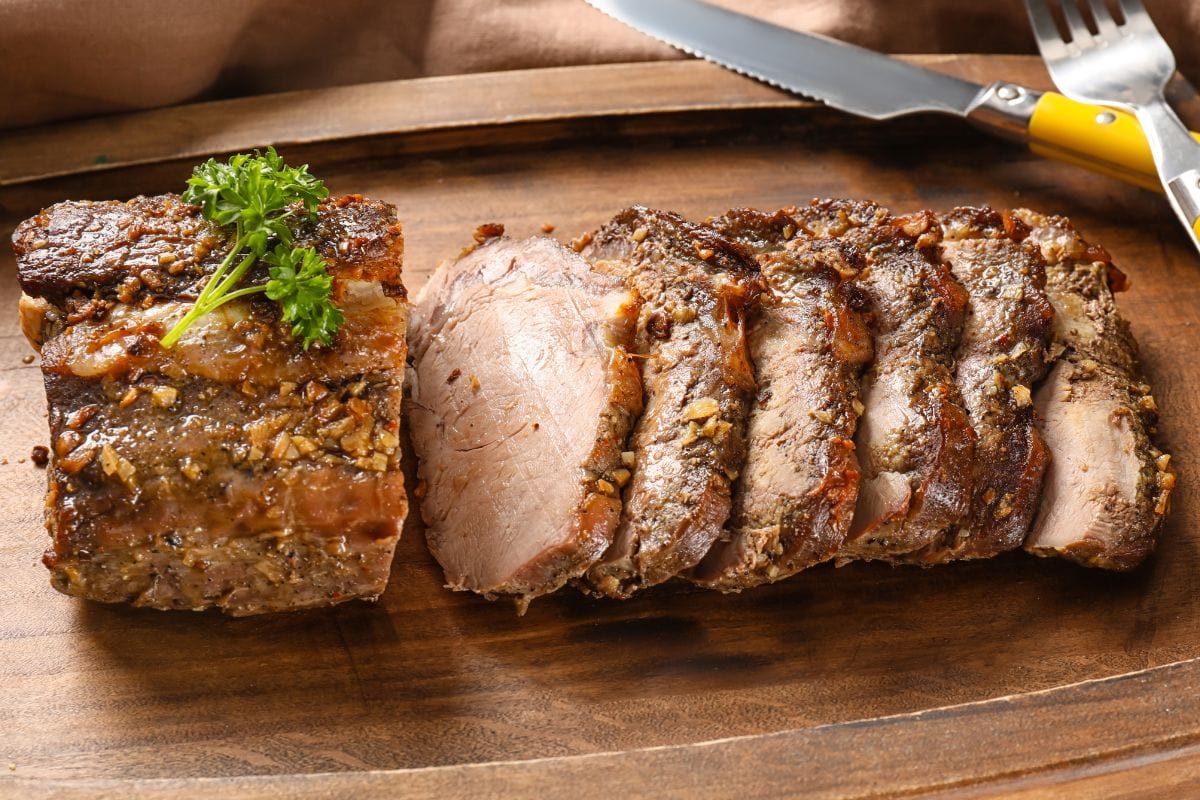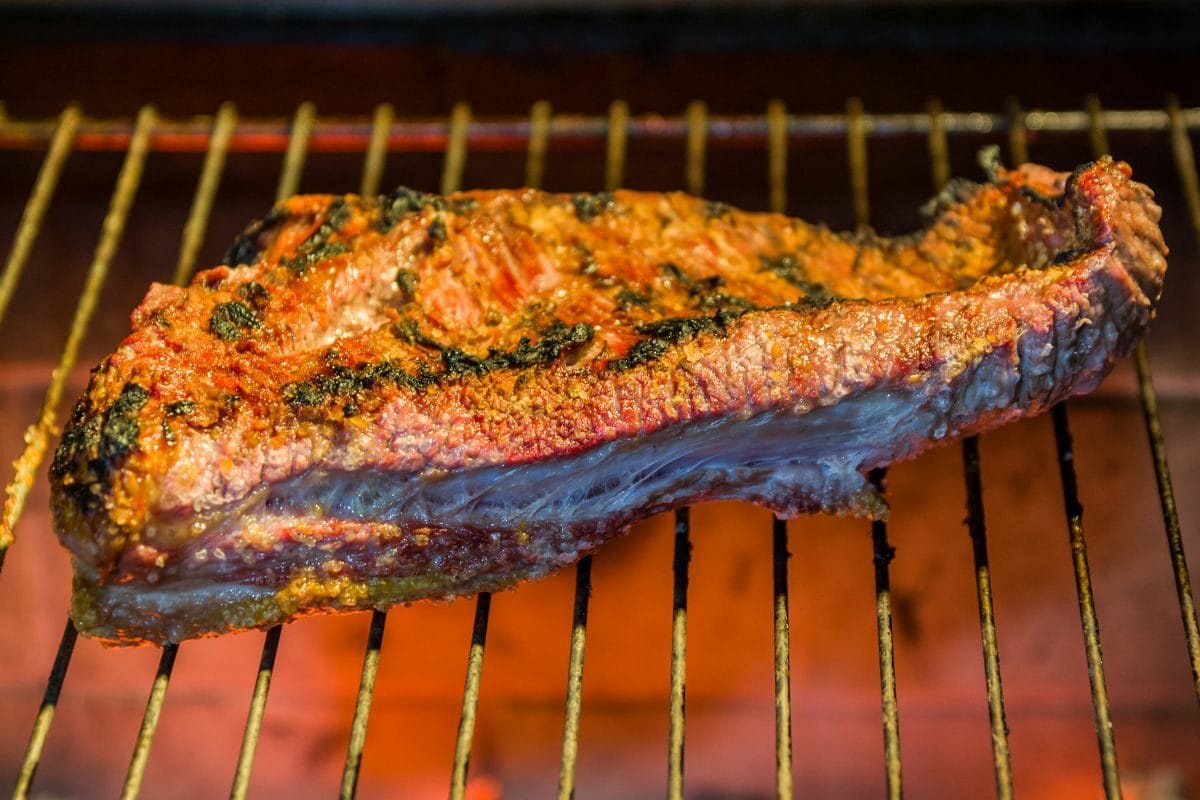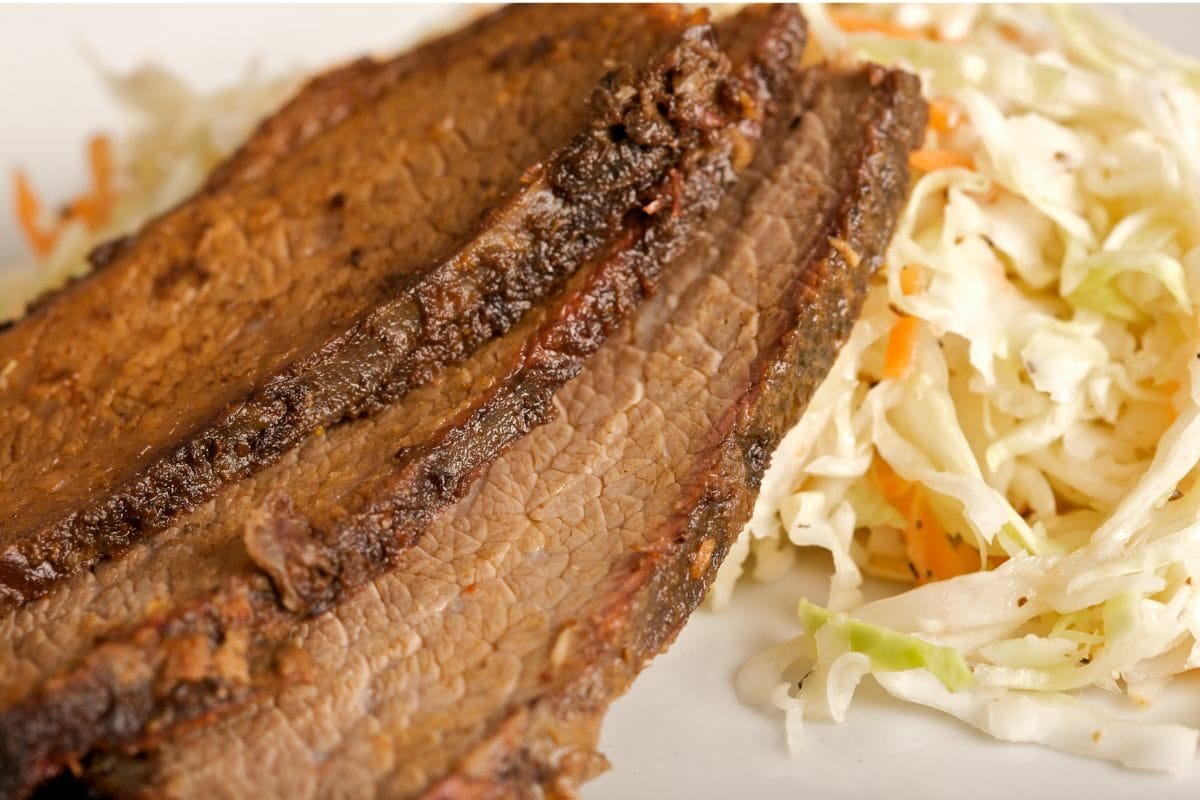The best way to reheat your brisket without drying it out is to heat it the same way you cooked it. If you cooked it low and slow in your oven, reheat the brisket in the oven as well.
Whenever I want to reheat my brisket whole, I lay it on a cooking tray and pop it back into the smoker until it gets to an internal temperature of 165°F.
As an experienced pitmaster, I have reheated brisket using different types of cooking gear, and yes, it is possible and easy to reheat your brisket without losing its moisture. Remember, low and slow is the secret here.
In this post, I will share how to reheat brisket in the oven, grill, smoker, and slow cooker. We shall also look into the sous vide method and how to properly store your leftover brisket.

The best way to reheat brisket is to employ the cooking equipment you used to prep it. This means that if you cooked it in the oven, it’s best to reheat it in the oven.
If you cooked it in the smoker, reheat it in the smoker. That said, there are 2 other methods that are great for reheating brisket: using the slow cooker and the sous vide method. Let’s get into each of them:
Reheating leftover brisket in the slow cooker is another great option because this kitchen equipment excels at low and slow recipes.
Most slow cookers have a temperature range of 170°F-280°F so it will take longer than the above method. Allow 3-4 hours to fully reheat whole brisket and at least 40 minutes to heat sliced brisket.
The key to a delicious meal when using a slow cooker is making sure you use enough cooking fluid to generate enough steam. So don’t spare the broth. I recommend covering your ingredients with the cooking fluid until they are just submerged.

The term ‘sous vide’ loosely translates to ‘under a vacuum’. It involves placing your food in a vacuum-sealed cooking pouch and then heating it to a specific temperature with the help of sous vide machine.
The feature that stands out about the sous vide technique is that it relies heavily on temperature control as opposed to timing, making it very reliable. If you would love to get one, I recommend Anova Culinary Sous Vide Precision Cooker simply because it is super easy to use and will easily fit into your utensil drawer.
Freshly cooked brisket can be stored in the freezer for up to 12 months. I recommend using it within three months for the best quality. So, how do you go about freezing your brisket?
Begin by slicing your brisket into more manageable sizes if you prefer. Slices are easier to portion and thaw when you need to use them.
However, I do not recommend slicing brisket before freezing it simply because once you start cutting into it, loses a lot of moisture as evidenced by the juices trickling down your cutting board.
But it is hard to ignore the fact that sliced brisket slices are a lot easier to portion and thaw. If you prefer to slice or shred your brisket, consider adding some beef broth or barbecue sauce when you reheat it to replace some of the moisture.
Divide your sliced brisket into portion sizes and place them in vacuum bags. Seal them. You can also use ziplock bags, plastic wrap, or airtight containers. The idea is to keep out as much air as possible.
Now label the bag by indicating its content and the date it was placed in the freezer. The rule remains, first in, first out. This means that the food that was stored earlier should be the first to be consumed.
You can now freeze your brisket.
It might seem tempting to just put your brisket in the microwave and heat it but any pitmaster worth his salt will frown upon this for two major reasons.
For starters, a microwave works by producing tiny waves that cause the water molecules in the food to vibrate and produce heat. This heat in turn heats the food which is why it takes a comparatively short amount of time to heat foods that are high in water content. These foods include stews, pudding, fresh fruits, and tea.
Similarly, heating leftover brisket in the microwave means its moisture will provide heat and you will end up with a chewy, rubbery piece of meat that is completely lacking in those inviting, tasty juices. The opposite of what we want!
Secondly, the microwave will not heat your brisket evenly. The outer crust will be heated primarily by steam from the meat while the inner layers will be heated by the heat from the outer crust.
This means that the crust is likely to overcook before the innermost part of your brisket gets to 165°F. So, it is a good idea to avoid the microwave when it comes to reheating beef brisket.
Leftover brisket can be reheated as many times as necessary or until you consume it all as long as you follow some health and safety guidelines. The most important of these guidelines are:

The USDA describes the danger zone as the temperature range between 40°F-140°F where bacteria proliferate, doubling in number in less than 20 minutes.
The 2-hour rule dictates that cooked food should not be left out of the fridge any longer than 2 hours. If the temp is over 90°F, you have one hour to refrigerate or consume it.
To reheat brisket without overcooking it, make sure to bring it to an internal temp of 165°F gradually. Low and slow cooking methods should be the way to go.
I recommend cooking at a temperature of at most 325°F for at least an hour for whole brisket. The lower the temp the longer it will take for the meat to heat through.
Regardless of the method you chose to reheat brisket, it is a great idea to supplement the moisture content to ensure your beef brisket remains moist.
This can be achieved by adding leftover cooking juices, beef broth, vegetable broth, or bbq sauce into your sealed brisket, oven dish, or baking pan.
Yes, you can. After cooking brisket and having your portion, refrigerate the leftovers within two hours and use any of the above methods of reheating brisket the following day.
It is possible to reheat leftover brisket without ending up with chewy meat. You can reheat brisket in the oven, grill, or smoke it with a dab of broth or bbq sauce.
Alternatively, you could use the slow cooker or employ the sous vide method but whatever you do, do not reheat brisket in the microwave. Now enjoy that brisket!